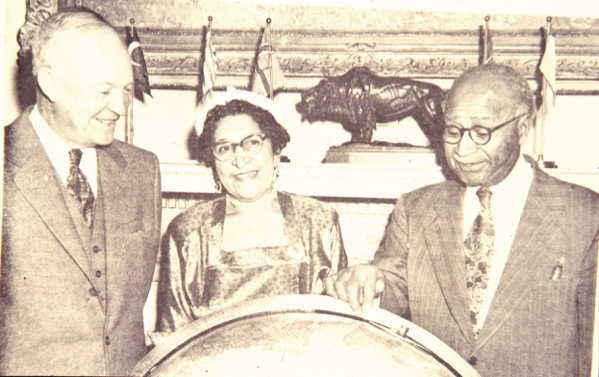Ack, my summaries of November 1957 IGY Bulletin articles have now slipped into December. Plus, the articles are continuing to repeat themes, as rockoons were discussed in another post less than a month ago. So I'll be quick about the rockoons this time, and add some other Arctic thoughts.
The article states that during a 10-day period in August 1957, 18 rockoons (balloon-launched rockets) were flown as part of the US-IGY program by scientists from the University of Iowa, under the direction of James Van Allen. The flights were made from the deck of the USS Plymouth Rock, roughly within the Arctic-subarctic zone outlined in red on the map below. A table of all 18 flights is included in the article. Seven flights recorded data throughout the balloon ascent and rocket flight portion of the missions.
 |
| Approximate map area of rockoon launches (Google Earth) |
The Hawk sounding rockets were launched at balloon altitudes of about 75,000 feet, or 15 miles, reaching as high as 132 km, or about 75 miles. This took them up to the altitudes of the aurorae, in the thermosphere/ionosphere.
Scientific objectives included measurements of the geomagnetic field, cosmic ray intensities, and of electrical currents. One of the instruments flown was a proton precession magnetometer. I used such a magnetometer, the Geometrics model G856, in my (ground-based) teaching and research at archaeological and geologic sites during my career.
Since we are now "in the Arctic," I'll take the opportunity to mention a couple of "Arctic experiences" I had during a trip to the Northeast in late September. I took my first airplane flight of the covid era from Philadelphia to Portland, Maine. On my way to Acadia National Park, I visited the Peary-MacMillan Arctic Museum at Bowdoin College in Brunswick, Maine. James Tanzer, Museum Outreach Coordinator, was kind enough to arrange my visit, these days by appointment only as campus buildings are generally closed to those from outside the Bowdoin community. The museum
 |
| Hubbard Hall, housing the Arctic Museum |
The coolest artifacts in the museum were Peary's notes and telegram about reaching the pole:
It was also neat to see some of the surveying and scientific instruments used on the expeditions. Just like what would be done for the IGY 50 years later, temperatures and barometric pressures were measured as key weather variables.
 |
| Thermometer |
 |
| Barometer |
 |
| Barometric and thermometric data |
 |
| First day cover with Scott #1128 for the stamp. The cover is US 194 in my collection. |
I appreciated learning more about Matthew Henson at the Museum. Henson (1866 - 1955) accompanied Peary on seven voyages to the Arctic over a period of nearly 23 years spending a total of 18 years on expeditions together. (Wow, that's half the lifetime of my marriage!) He was part of the 1908–1909 expedition that claimed to have reached the geographic North Pole on April 6, 1909. Henson said he was the first of their party to reach the pole. Henson, being Black, got only subdued and belated kudos for his accomplishment. I
 |
| Matthew and Mrs. Henson with President Eisenhower at The White House; age 88 (Bowdoin College) |
I ran into Henson again when I spent a night on the same trip in Mystic, Connecticut, and visited the Mystic Seaport Museum. Although he does not show up when you google his name through the Museum's website, there was a panel on him, shown below. It pointed out that the shipbuilding community near Mystic had sent many whaling vessels into the Arctic in the mid-1800s, before Henson went there for a different reason.







No comments:
Post a Comment